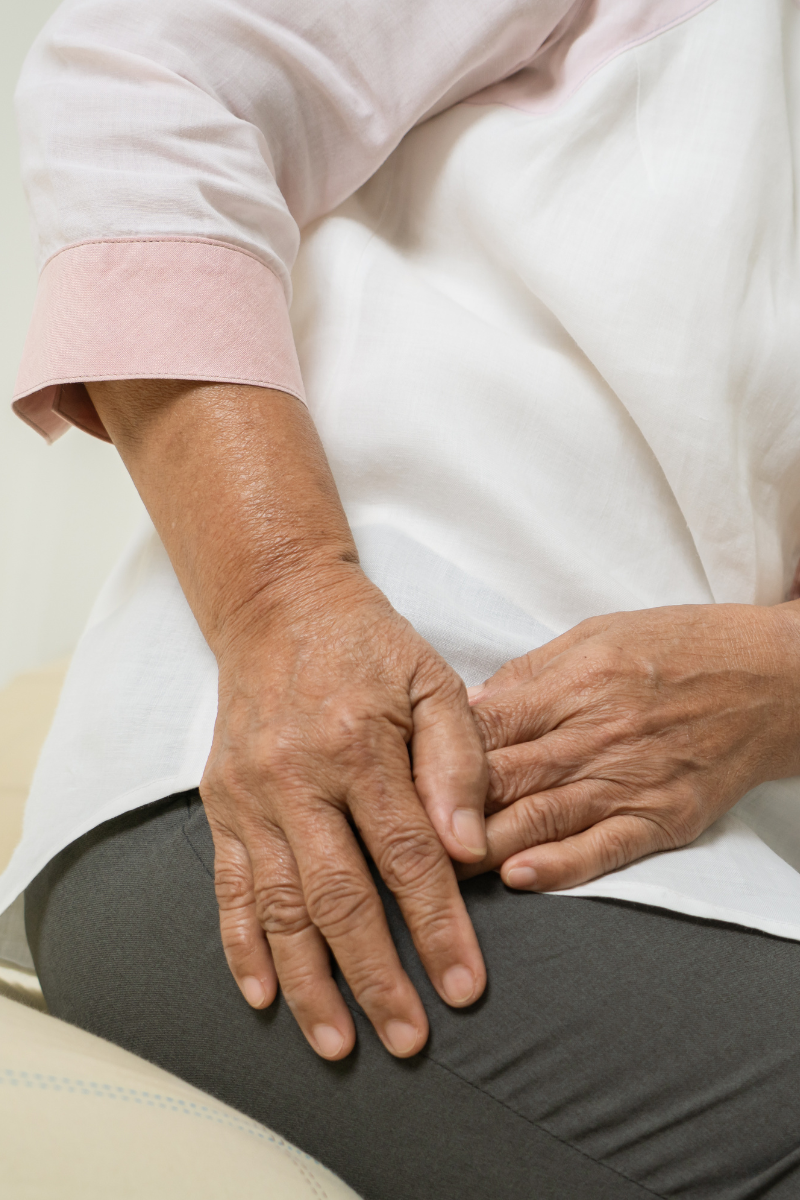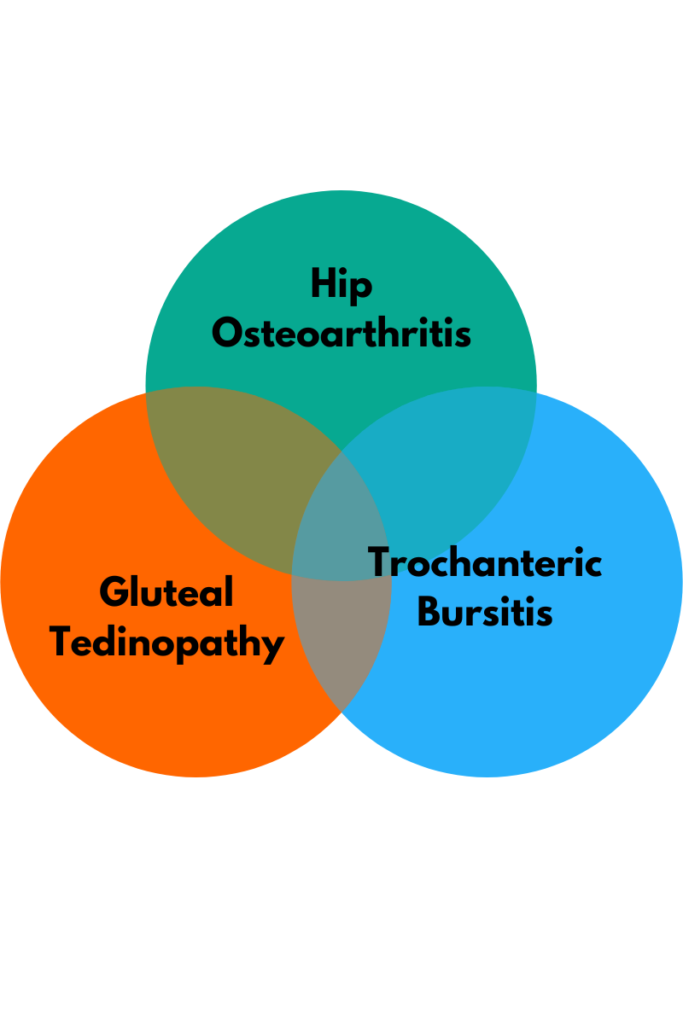
Hip pain can greatly affect our ability to function. From running to walking, sitting to lying down and squating and rolling over many actions become difficult when we have a painful hip.
The most common type of hip pain that we see in physiotherapy is called Greater Trochanteric Pain Syndrome or GTPS. This condition used to be called trochanteric bursitis however with more research into the condition and better medical imaging what we have seen that often much like the shoulder, it is not just the hip bursa that is causing problems for people. So as we tend to do in physiotherapy, what we call this common condition has evolved.
The reason it is now called a syndrome is that what we typically see is components of three conditions presenting in varying degrees in people with posterior-lateral hip pain. In many cases hip arthritis, gluteal tendinopathy and trochanteric bursitis are all contributing at least to a degree to the symptoms. This means management should address all three.

Greater Trochanter Pain Syndrome (GTPS) affects approximately 10-25% of the general population. There is increased prevalence in females, and mostly strikes around the ages of 40-60. There is also increased risk in long distance runners.
Some classic features of Greater Trochanteric Pain Syndrome are:
*Pain at night when lying on the affected side
*Pain rolling over in bed
*Pain with sitting in chairs
*Pain after running / walking activities
*Tenderness on palpation over the greater trochanter
Ultrasound and MRI are sometimes used to confirm your diagnosis but often as physiotherapists we can see clinical signs on assessment that allow us to diagnose the condition.
Conservative management is highly successful in the management of Greater Trochanteric Pain Syndrome. Injections are sometimes required to help reduce any pain that is coming from the bursa however being a largely tendon related issue your physio will guide you through a plan that reduces pain and then aims to gradually and appropriately re-load the affected tendons.
This condition can take months to settle in some cases and at times as a patient it will test your patience however complete resolution of symptoms shoulder occur in a majority of cases. Your physiotherapy program for Greater Trochanteric Pain Syndrome will be broken into three phases.
Phase 1 - reduce pain
This will involve a combination of resting and refraining from aggravating activities (such as stretching and prolonged sitting) as well as hands on physiotherapy techniques.
Phase 2 - rehabilitating the tendon
This phase will be exercise based and will gradually re-introduce progressive load back into the glute tendons. It is important to get this phase correct as it is often at this point where too much load too soon can cause relapse.
Phase 3 - addressing weakness to prevent recurrence
In this phase a more holistic exercise program will be developed to address underlying weaknesses that may have predisposed you to the condition in the first place. Such as overall strength and function of the glutes and hamstrings.
Greater trochanteric pain syndrome is a common condition and something that we see often. Physiotherapy is often very effective at settling this condition and this means before going straight for a cortisone injection you should consult your physiotherapist first.